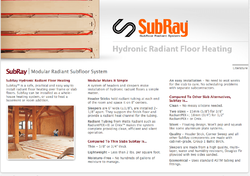Has anyone had experience with solid hardwood flooring installed above the sub-floor with radiant tubing (1/2") running between furring strips (5/8")anchored to the sub-floor? I really hope to hear from someone who is having good results. I do not want to install the tubing in the joist area below the sheathing. I want to get the water closer to the hardwood so I can heat with lower temperature water so I can stretch the time between firings. I do plan to put foil down to reflect the heat upward. The area directly below this room is a heated den area.
I have been told not to exceed 85 degree surface temperature on the hardwood floor or I may have problems with cupping or warping, this was from a person who does not have hardwood installed in this manner. The hardwood was kiln dried and has been stored inside for 3 1/2 months and is well acclimated to a winter indoor climate.
I have low windows in the living room with lots of outlets, panel rads or radiators do not seem to fit this layout so radiant under hardwood it is.
George
I have been told not to exceed 85 degree surface temperature on the hardwood floor or I may have problems with cupping or warping, this was from a person who does not have hardwood installed in this manner. The hardwood was kiln dried and has been stored inside for 3 1/2 months and is well acclimated to a winter indoor climate.
I have low windows in the living room with lots of outlets, panel rads or radiators do not seem to fit this layout so radiant under hardwood it is.
George


